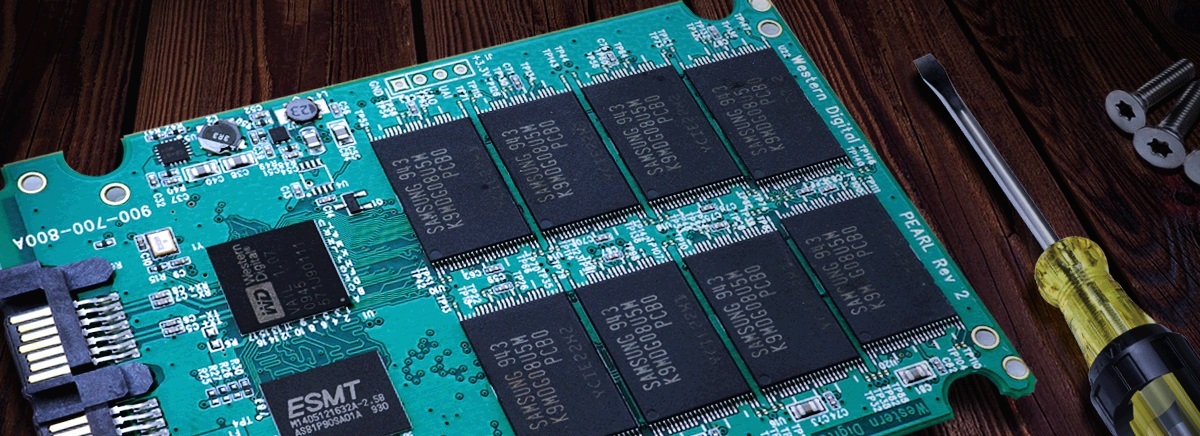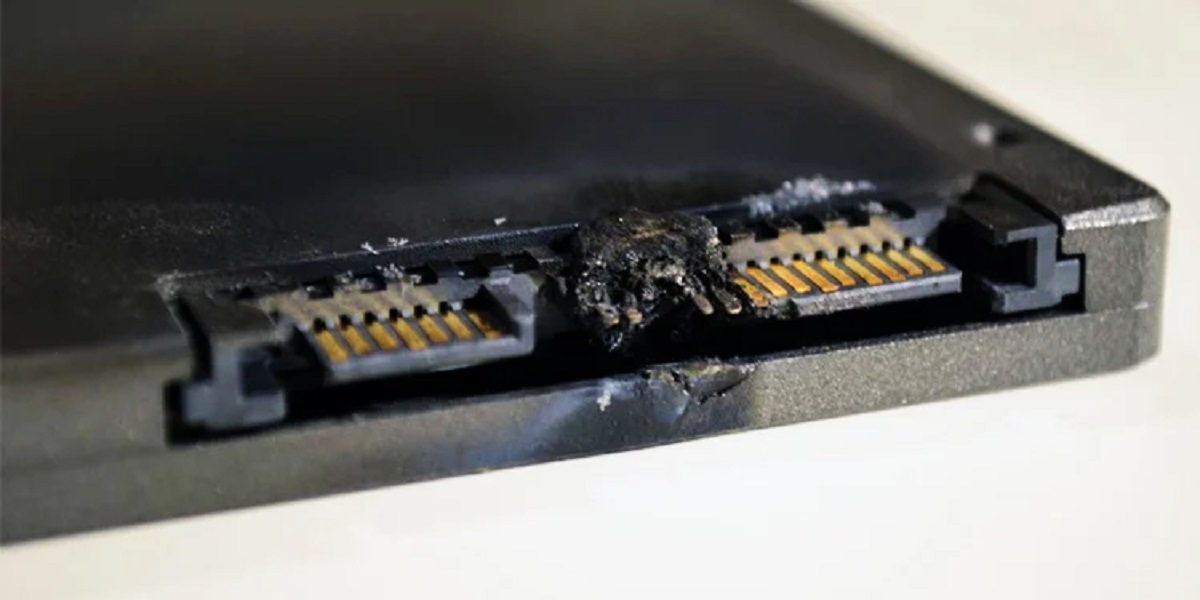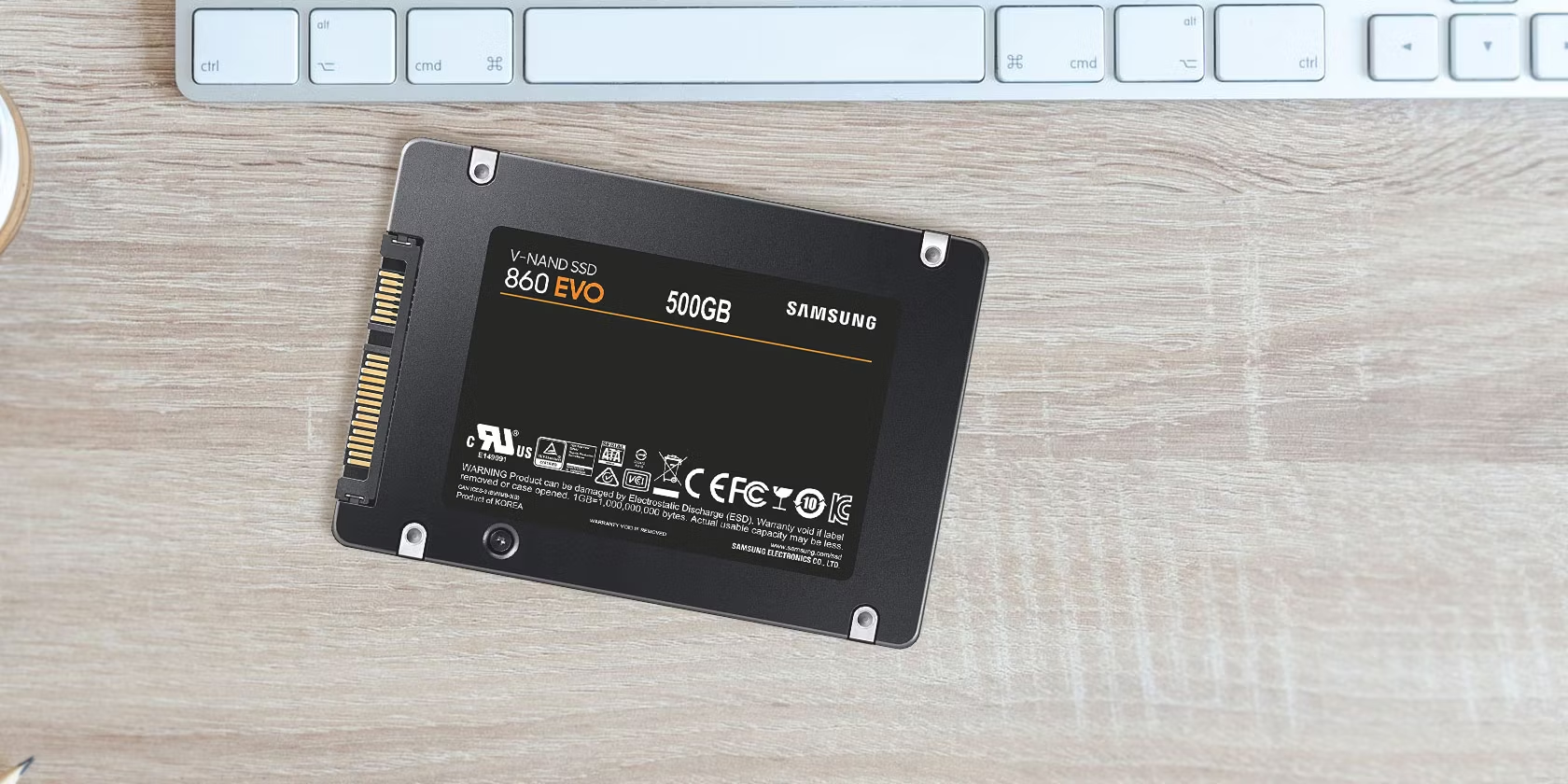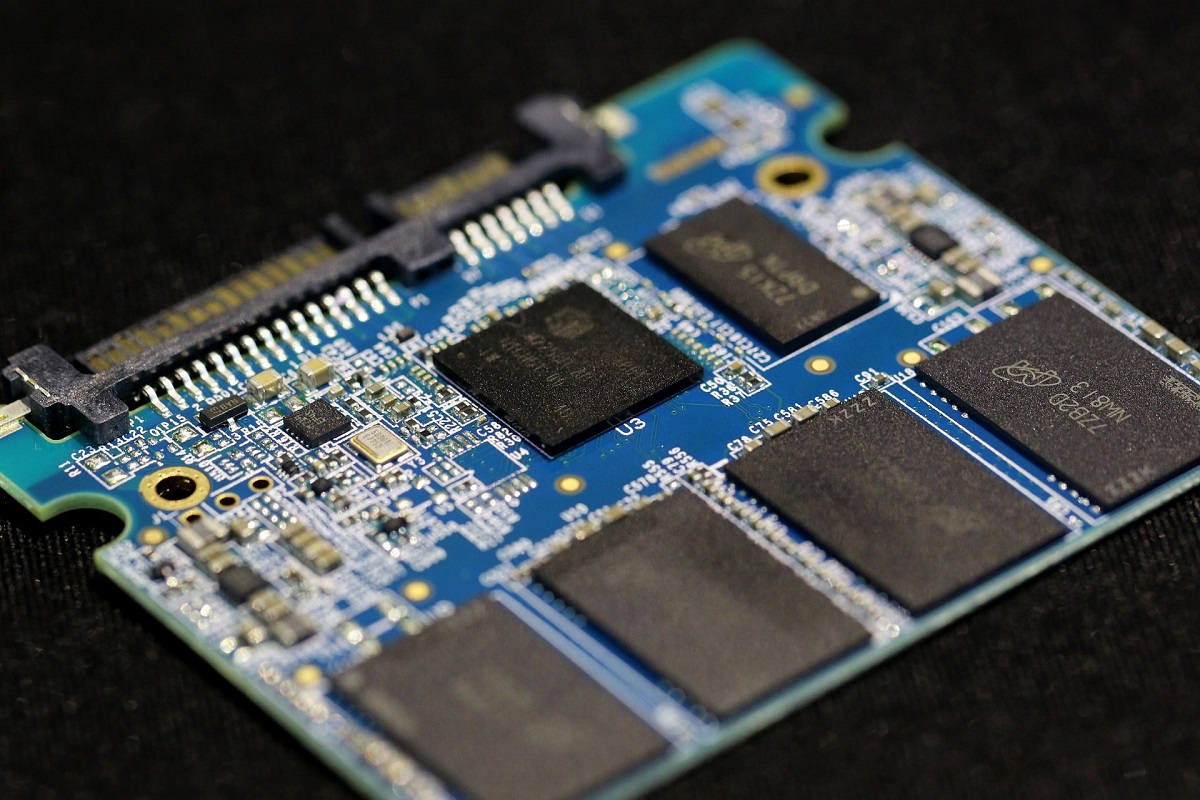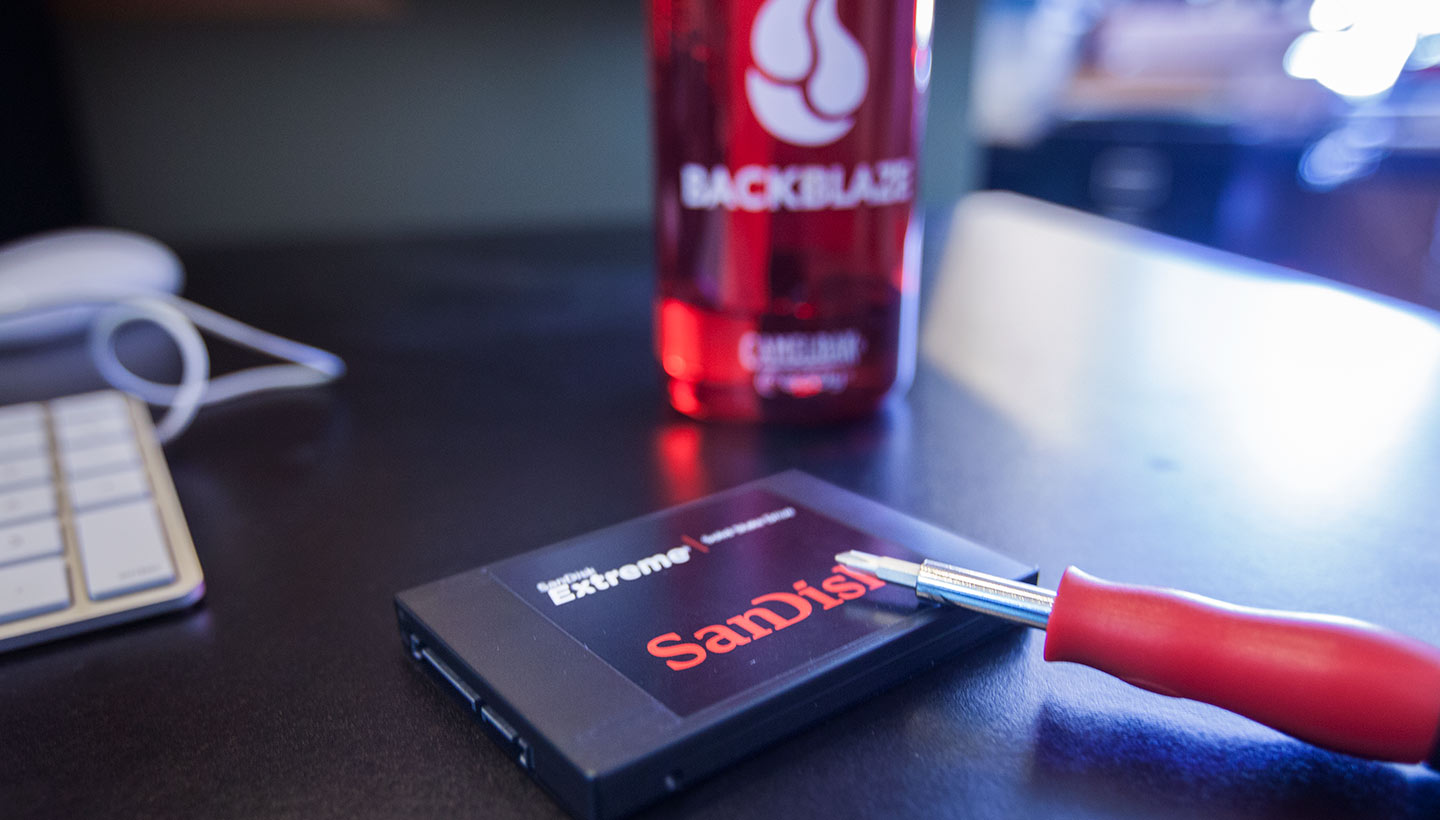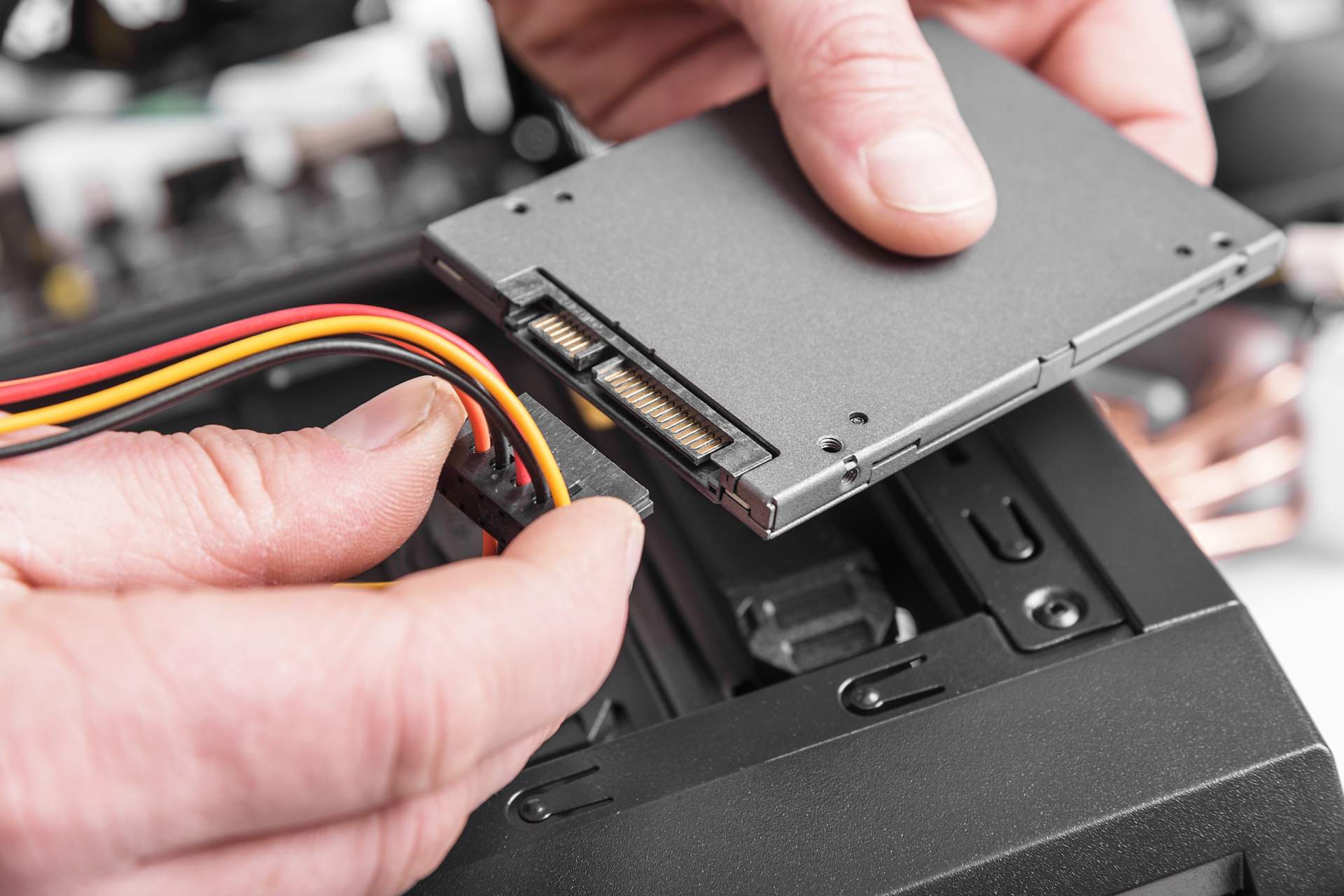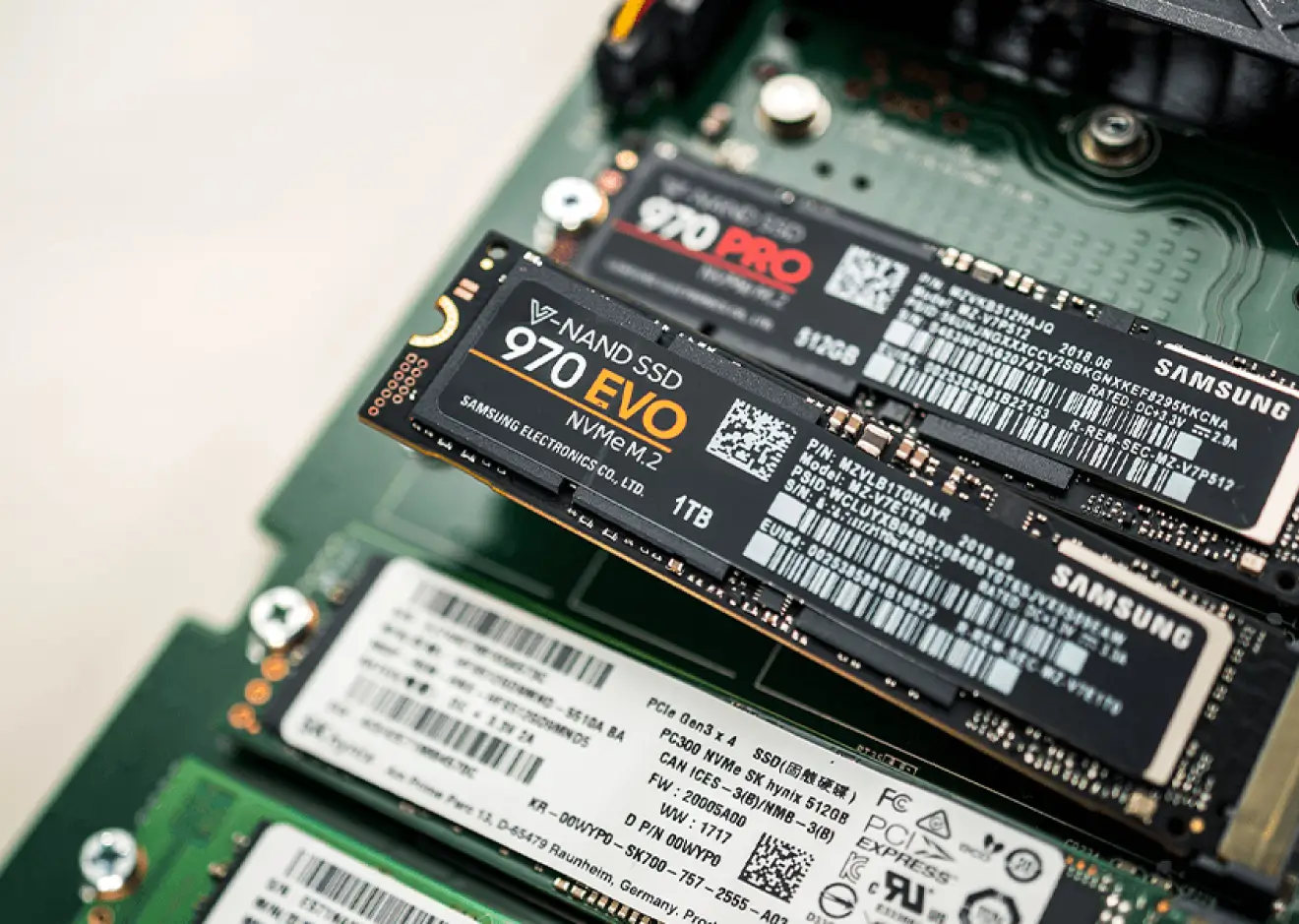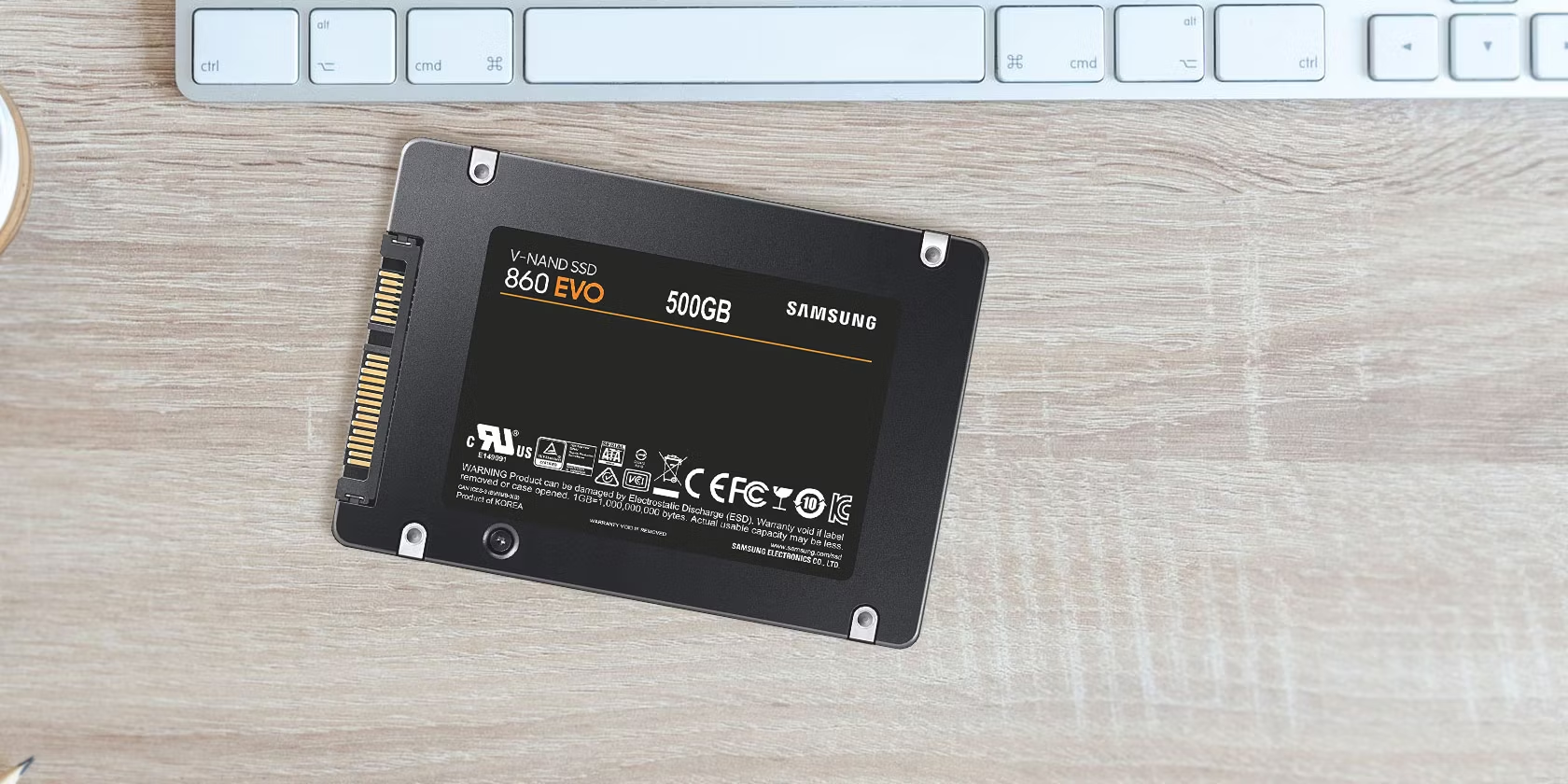Introduction
Welcome to the world of solid-state drives (SSDs), a game-changing technology that has revolutionized the way we store and access data. SSDs are known for their lightning-fast performance, durability, and efficiency. However, like any electronic device, SSDs are not exempt from potential failures.
In this article, we will explore the various factors that can cause an SSD to fail. Understanding these causes can help users make informed decisions when it comes to choosing, maintaining, and troubleshooting their SSDs.
SSD failures can result in data loss, system slowdowns, and even complete device unresponsiveness. By identifying the root causes of these failures, users can take the necessary precautions to prolong the lifespan of their SSDs and minimize the risk of unexpected failures.
It’s important to note that not all SSD failures are the same. Some failures can be attributed to manufacturing defects, while others may be caused by user errors or external factors. By understanding the range of potential causes, users can better diagnose and address SSD issues.
In the following sections, we will delve into the most common causes of SSD failures. From NAND flash degradation to power surges and physical damage, we’ll explore each cause in detail. By the end of this article, you’ll have a comprehensive understanding of the factors that can contribute to SSD failure.
NAND Flash Degradation
One of the primary causes of SSD failure is NAND flash degradation. NAND flash memory, which is used in SSDs to store data, has a limited lifespan characterized by a finite number of write cycles. Over time, as data is written and erased repeatedly, the flash cells gradually wear out, leading to potential data loss and reduced performance.
Several factors contribute to NAND flash degradation, including voltage fluctuations, high operating temperatures, and the accumulation of program and erase cycles. These factors can cause the gradual deterioration of the flash cells, resulting in read/write errors and ultimately, SSD failure.
To combat NAND flash degradation, SSDs employ a technique called wear leveling. Wear leveling distributes write operations across the memory cells evenly, preventing overuse of specific cells and prolonging the lifespan of the drive. However, despite wear leveling algorithms, prolonged and extensive usage can still lead to accelerated degradation and eventual failure.
It is important to note that not all SSDs are created equal when it comes to NAND flash degradation. Higher-quality SSDs often utilize advanced NAND flash technologies, such as multi-level cell (MLC) or triple-level cell (TLC), which offer greater durability and longevity compared to the more affordable single-level cell (SLC) flash.
To mitigate the risk of NAND flash degradation, it is recommended to avoid excessive write operations whenever possible. This includes minimizing unnecessary file transfers, avoiding constant downloading or saving of large files, and regularly monitoring storage usage to ensure sufficient available space.
In addition, maintaining proper airflow and temperature control within the computer system can help prevent overheating, which can accelerate NAND flash degradation. Proper ventilation, cooling fans, and avoiding placing the SSD near heat-generating components can all contribute to a healthier operating environment for the drive.
By understanding the process of NAND flash degradation and taking proactive measures to minimize its impact, users can greatly reduce the risk of SSD failure and maximize the lifespan of their drives.
Firmware Issues
Firmware, the software embedded in an SSD, plays a crucial role in its operation and functionality. However, firmware issues can arise and contribute to SSD failures. Firmware is responsible for managing data storage, error correction, wear leveling, and other essential functions.
One common firmware issue is firmware bugs or glitches. These software errors can cause instability, data corruption, and even system crashes. Firmware bugs can be introduced during the manufacturing process or through subsequent updates or modifications.
Another firmware-related issue is outdated or incompatible firmware. Using outdated firmware or installing firmware that is not compatible with the SSD can result in compatibility issues with the system, leading to performance degradation or complete failure of the drive.
In some cases, firmware corruption can occur, often due to power outages or improper firmware updates. Corrupted firmware can lead to data loss, unresponsiveness, and overall system instability.
To mitigate firmware issues, it is crucial to regularly check for firmware updates provided by the SSD manufacturer. These updates often include bug fixes, performance enhancements, and compatibility improvements. However, it is essential to follow the manufacturer’s instructions carefully when updating firmware to avoid any potential issues or data loss.
In the event of firmware corruption or errors, some SSDs offer built-in firmware recovery mechanisms. These mechanisms allow users to restore the firmware to its original state or reflash a new firmware version, helping to resolve firmware-related issues and restore the functionality of the drive.
Remember, firmware issues can occur even with high-quality SSDs. By staying proactive and keeping firmware up to date, users can minimize the risk of firmware-related failures and ensure optimal performance and reliability from their SSDs.
Power Surges or Electrical Issues
Power surges and electrical issues can pose significant risks to the health and functionality of SSDs. These issues can be caused by factors such as lightning strikes, faulty power supplies, unstable electrical grids, or improper handling of power cables.
During a power surge, a sudden increase in voltage can overwhelm the electronic components of an SSD, causing damage to the sensitive circuitry. Power surges can result in immediate SSD failure or lead to gradual deterioration over time.
Electrical issues such as brownouts or voltage fluctuations can also have detrimental effects on SSDs. When the voltage drops significantly or fluctuates excessively, the SSD may not receive a stable power supply, leading to instability, data corruption, or even complete failure.
To protect SSDs from power surges and electrical issues, it is recommended to use high-quality surge protectors or uninterruptible power supplies (UPS). These devices help regulate the power supply, absorb excess voltage, and provide a stable electrical environment for the SSD.
In addition to using protective devices, it is crucial to handle power cables with care and ensure they are securely connected. Loose or damaged power cables can cause intermittent power supply issues, which can negatively impact the SSD’s performance and reliability.
Regularly inspecting the power cables and replacing them if necessary can help prevent potential electrical issues. It is also advisable to avoid plugging the SSD into power outlets that are known to be unreliable or prone to voltage fluctuations.
By taking proactive measures to protect SSDs from power surges and electrical issues, users can safeguard their data and prolong the lifespan of their drives. Remember, prevention is key when it comes to mitigating the risks associated with power-related failures.
Overheating
Overheating is a common cause of SSD failure and can be attributed to various factors, including inadequate airflow, improper ventilation, and excessive heat generated by surrounding components.
When SSDs operate at high temperatures, the internal components may become vulnerable to damage and degradation. Extended exposure to excessive heat can lead to data corruption, reduced performance, and in severe cases, permanent damage to the SSD.
One of the main contributors to SSD overheating is poor airflow within the computer system. Inadequate ventilation can trap heat around the SSD, preventing heat dissipation and causing the temperature to rise. Additionally, placing the SSD in close proximity to heat-generating components such as processors or graphics cards can also exacerbate the overheating issue.
To address overheating concerns, it is essential to ensure proper airflow within the computer system. This can be achieved by strategically positioning and organizing cables to allow for unobstructed airflow. Installing additional case fans or using liquid cooling systems can also help in dissipating heat effectively.
Moreover, using SSD heat sinks or cooling pads specifically designed for SSDs can help to reduce the temperature of the drive during intense usage or in high-temperature environments.
Regularly monitoring the temperature of the SSD is crucial in avoiding overheating. Various software tools are available that allow users to track the temperature of their SSD in real-time and set up alerts in case of excessive heat.
By ensuring proper ventilation, implementing cooling solutions, and monitoring the temperature, users can significantly reduce the risk of overheating and extend the lifespan of their SSDs.
Physical Damage
Physical damage is another significant factor that can lead to SSD failure. SSDs, like any other hardware component, are susceptible to damage from various sources, including accidental drops, impacts, excessive pressure, and exposure to extreme temperatures or moisture.
One of the most common physical damages is caused by drops or impacts. If an SSD is dropped or subjected to a strong impact, the delicate electronic components inside can be damaged, resulting in performance issues or complete failure.
Excessive pressure on the SSD, such as stacking heavy objects on top of it or mishandling during installation, can also cause physical damage. The pressure can deform or crack the internal components, rendering the SSD inoperable.
Environmental factors such as extreme temperatures or moisture can also contribute to physical damage. SSDs have specified operating temperature ranges, and exposing them to temperatures outside these ranges can lead to malfunctions or permanent damage. Similarly, moisture or liquid exposure can corrode the internal circuitry and result in failure.
To minimize the risk of physical damage, it is crucial to handle SSDs with care. Avoid subjecting them to sudden impacts, drops, or putting excessive pressure on them. When installing or removing an SSD, follow the manufacturer’s guidelines to ensure proper handling and avoid any mishaps.
SSDs should also be protected from extreme temperatures and moisture. When storing or using them, make sure they are in environments within the specified temperature and humidity ranges. If necessary, use protective enclosures or cases to shield the SSD from potential hazards.
Preventing physical damage is critical to maintaining the functionality and longevity of an SSD. By practicing caution and taking appropriate measures to protect the drive from physical harm, users can minimize the risk of failure and ensure reliable performance.
Manufacturing Defects
Manufacturing defects can occur in any electronic device, including SSDs, despite stringent quality control measures. These defects can manifest in various ways and potentially lead to SSD failure.
One common manufacturing defect is the use of faulty or substandard components in the SSD’s construction. This can result in unstable performance, data corruption, or even complete device failure. Components such as the controller chip, NAND flash memory, or power regulation circuitry are particularly susceptible to manufacturing defects.
Inadequate assembly or poor soldering can also contribute to manufacturing defects. Loose connections or faulty solder joints can lead to intermittent failures, signal disruption, or complete loss of functionality in the SSD.
Additionally, errors during the firmware programming process can introduce manufacturing defects. Improperly written firmware or misconfiguration of the drive’s firmware can result in errors, instability, or compatibility issues that can lead to SSD failure.
Manufacturing defects are often detected early on through quality control processes, but occasionally, some defects go unnoticed until the product reaches the end user. Despite the low probability of encountering a defective SSD, it is still a possibility.
It is recommended to purchase SSDs from reputable manufacturers with a track record of quality and reliability. By choosing reliable brands, users can reduce the likelihood of encountering manufacturing defects. Additionally, checking online reviews and customer feedback can provide insight into the reliability of specific SSD models.
Moreover, most SSDs come with a warranty that covers manufacturing defects. Registering the SSD with the manufacturer and keeping all documentation will make it easier to initiate the warranty claim process, should it become necessary.
While the occurrence of manufacturing defects is relatively rare, being aware of the potential risks and purchasing from reliable manufacturers can help mitigate the chance of SSD failure due to manufacturing defects.
Excessive Usage or Write Operations
Excessive usage and write operations can significantly impact the lifespan and performance of an SSD. While SSDs are designed to handle a high number of write cycles, continuous and intensive usage can lead to faster wear and deterioration of the NAND flash memory cells.
One of the primary factors contributing to excessive usage is heavy workloads that involve frequent and large file transfers, constant downloading or saving of data, or running resource-intensive applications. These activities result in a higher number of write operations on the SSD, which can accelerate the wear and tear of the NAND flash memory.
Similarly, tasks that involve extensive video editing, 3D rendering, or virtualization can place a heavy load on the SSD. These processes involve continuous and intensive write operations, potentially leading to an increased risk of failure if not properly managed.
To minimize the impact of excessive usage, it is advisable to spread out write operations whenever possible. This can be achieved by offloading temporary files or scratch disks to a separate drive or utilizing software features that distribute write operations evenly across the SSD.
Regularly monitoring the SSD’s usage and keeping track of the total bytes written (TBW) can provide insights into the drive’s health and help anticipate potential failures. SSD health monitoring tools provided by manufacturers or third-party software can assist in tracking usage statistics and provide warnings when the drive approaches its maximum specified endurance.
Selecting SSDs with higher endurance ratings, also known as terabytes written (TBW), can be beneficial for users with heavy workloads or an anticipated higher number of write operations. This ensures that the drive is better equipped to handle the demands of intensive usage.
Ultimately, managing excessive usage and write operations is crucial for maintaining the longevity and performance of an SSD. By adopting best practices, monitoring usage, and selecting SSDs that match the workload requirements, users can mitigate the risk of failure associated with excessive usage.
Improper Handling or Installation
Improper handling or installation of an SSD can cause damage and lead to potential failures. It is essential to follow proper procedures to ensure the longevity and functionality of the SSD.
One common mistake is mishandling the SSD during installation or removal. Rough handling, excessive force, or incorrect insertion can result in physical damage to the drive or damage to the connectors, rendering it inoperable.
Improper handling also includes exposing the SSD to static electricity. Electrostatic discharge (ESD) can damage sensitive electronic components inside the SSD. To prevent ESD, it is advised to use an anti-static wrist strap or work on an anti-static mat when handling SSDs.
Another critical aspect is ensuring compatibility between the SSD and the system. Installing an SSD with an incompatible interface or form factor can cause compatibility issues, preventing the drive from functioning correctly. It is essential to check the system’s specifications and select an SSD that aligns with the system requirements.
During installation, it is crucial to connect the SSD securely and position it correctly in the designated slot or bay. Loose or improperly connected cables can cause data corruption or intermittent failures, impacting the SSD’s performance and reliability.
Proper ventilation and cooling are also essential factors when it comes to installation. Installing the SSD in an area with poor airflow or in a location susceptible to high temperatures can lead to overheating and subsequently, SSD failure. Ensuring proper airflow and temperature control within the system is paramount for maintaining optimal SSD performance.
To avoid improper handling and installation, it is recommended to refer to the manufacturer’s guidelines and installation instructions. These instructions provide step-by-step procedures specific to the SSD model and can help prevent damage and ensure a successful installation.
By handling the SSD with care, following installation instructions, and ensuring compatibility and proper airflow, users can minimize the risk of failures resulting from improper handling or installation.
Compatibility Issues
Compatibility issues can arise when using an SSD with incompatible hardware or software components. These issues can affect the performance, functionality, and even the stability of the SSD.
One common type of compatibility issue is related to the interface or connector type. SSDs are available in different interface formats, such as SATA, PCIe, or M.2. It is crucial to ensure that the SSD interface matches the interface supported by the system’s motherboard or expansion slots. Incompatible interfaces can lead to connection issues, data transfer problems, or the SSD not being recognized by the system.
Form factor compatibility is another consideration. SSDs come in various sizes, such as 2.5-inch, 3.5-inch, or M.2 form factors. It is essential to choose an SSD that fits in the available drive bays or slots of the computer system. Trying to forcibly fit an incompatible form factor SSD may lead to physical damage or improper connections.
Software compatibility is also crucial for optimal SSD performance. It is recommended to use an operating system that supports the features and functionality of the SSD, such as TRIM support for efficient garbage collection and wear leveling. Additionally, using the latest firmware and device drivers provided by the SSD manufacturer ensures better compatibility and performance.
When upgrading an existing system with an SSD, it is essential to verify that the system’s BIOS or UEFI firmware supports booting from the SSD. Some older systems may require a firmware update to properly boot from an SSD.
It is always advisable to check the SSD manufacturer’s website or technical documentation for any known compatibility issues or recommended configurations. This information can help users make informed decisions when selecting and installing an SSD.
By ensuring compatibility between the SSD and the hardware and software components of the computer system, users can avoid potential compatibility issues that may impact the SSD’s performance, stability, and overall functionality.
Controller Chip Failure
The controller chip in an SSD is responsible for managing the data flow, handling read and write operations, and ensuring the overall performance of the drive. However, like any electronic component, the controller chip is susceptible to failure, which can result in SSD malfunction or complete failure.
A common cause of controller chip failure is excessive heat. High temperatures can cause the controller chip to overheat, affecting its ability to function properly. Overheating can occur due to poor airflow within the system, inadequate cooling solutions, or operating the SSD in an environment with elevated temperatures.
Power fluctuations or electrical issues can also lead to controller chip failure. Voltage spikes, power surges, or sudden drops in power can damage the delicate internal circuitry of the chip, causing it to malfunction or fail completely.
Inadequate firmware or firmware bugs can also impact the functioning of the controller chip. Firmware issues can result in instability, data corruption, or improper data handling by the chip. These issues can impair the SSD’s performance and can eventually lead to controller chip failure.
Manufacturing defects can manifest in the controller chip as well. Improperly soldered connections, faulty components, or other manufacturing errors can compromise the functionality and reliability of the chip, ultimately leading to failure.
Unfortunately, controller chip failure is often a critical issue that may require professional intervention or even the replacement of the entire SSD. In some cases, users may be able to recover their data through specialized data recovery services, but the SSD itself may be beyond repair.
To minimize the risk of controller chip failure, it is crucial to maintain proper cooling and temperature management within the computer system. Ensuring adequate airflow, using cooling solutions such as heat sinks or fans, and avoiding high-temperature environments can help mitigate the risk of overheating.
Regularly updating the firmware provided by the SSD manufacturer is also important to address any potential bugs or issues that may impact the controller chip’s performance. Firmware updates often include bug fixes, performance improvements, and compatibility enhancements.
By taking precautionary measures to prevent excessive heat build-up, power fluctuations, and staying updated with firmware releases, users can reduce the likelihood of controller chip failure and promote the longevity and reliability of their SSDs.
Wear Leveling Exhaustion
Wear leveling is a crucial feature in SSDs that helps distribute write operations evenly across the NAND flash memory cells. It aims to prevent specific cells from wearing out faster than others, thus prolonging the overall lifespan of the SSD. However, wear leveling can only handle a limited number of write cycles before exhaustion becomes a potential issue.
As data is written and erased on an SSD, the physical state of the NAND flash memory cells changes. Over time, some cells may become worn out and no longer retain data reliably. Wear leveling addresses this by spreading the write operations across different cells. However, wear leveling algorithms have a finite capacity, and when it reaches its limit, the SSD may start experiencing issues.
When wear leveling exhaustion occurs, the SSD’s performance can degrade, and the risk of data corruption or loss increases. The exhausted cells may become less responsive, leading to read or write errors. In severe cases, the exhausted cells may render the SSD unreliable or completely unusable.
Several factors can contribute to wear leveling exhaustion. Intensive and continuous write operations, particularly in SSDs used in high-demand applications or servers, can accelerate wear leveling exhaustion. SSDs with smaller capacities also tend to have a shorter lifespan due to a higher concentration of write operations on limited NAND flash memory cells.
The lifespan of an SSD is often indicated by its endurance rating, which is usually expressed in total bytes written (TBW). Manufacturers provide this specification to inform users of the maximum amount of data that can be written to the drive before wear leveling exhaustion becomes a concern. It is crucial to consider an SSD’s endurance rating when selecting a drive for specific use cases.
To prolong the lifespan of an SSD and avoid wear leveling exhaustion, several practices can be implemented. Minimizing unnecessary write operations, such as reducing temporary file transfers or redirecting caching to a different drive, can help decrease the strain on the NAND flash memory cells. Additionally, utilizing technologies like TRIM, which allows the operating system to inform the SSD which blocks of data are no longer in use, can improve performance and assist with wear leveling.
Monitoring the SSD’s health, including evaluating the percentage of life consumed or the remaining TBW, can provide insights into the SSD’s wear level. This information allows users to plan for possible replacements or take preventative measures to avoid data loss.
By understanding wear leveling exhaustion and implementing strategies to minimize the strain on the SSD’s NAND flash memory cells, users can prolong the lifespan and optimize the performance of their SSDs.
Conclusion
SSDs have revolutionized the storage industry with their speed, durability, and efficiency. However, it’s important to understand the potential causes of SSD failure to ensure their optimal performance, longevity, and data integrity.
In this article, we’ve explored the various factors that can contribute to SSD failure. From NAND flash degradation and firmware issues to power surges, physical damage, manufacturing defects, and excessive usage, each factor plays a significant role in the health and reliability of an SSD.
We’ve also discussed the importance of proper handling and installation, as well as the impact of compatibility issues on SSD performance. Taking preventative measures, such as maintaining proper ventilation and temperature control, can help avoid common issues such as overheating that lead to failure.
By staying informed about the limitations of wear leveling and incorporating best practices to minimize wear and tear, users can extend the lifespan of their SSDs and avoid wear leveling exhaustion.
To mitigate the risk of SSD failures, it is crucial to follow manufacturer guidelines, keep firmware up to date, and monitor the SSD’s health and usage. Regularly backing up important data is also essential to prevent the potential loss caused by SSD failures.
While SSD failures can be disruptive, it’s important to remember that they are relatively rare occurrences. Selecting a high-quality SSD from a reputable manufacturer, following best practices, and being proactive in maintenance and care can greatly reduce the likelihood of encountering such failures.
By understanding the causes of SSD failures and implementing preventive measures, users can enjoy the lightning-fast performance and reliability that SSDs offer, ensuring a seamless and efficient computing experience for years to come.







